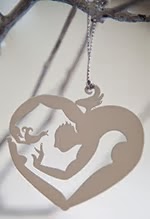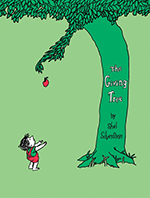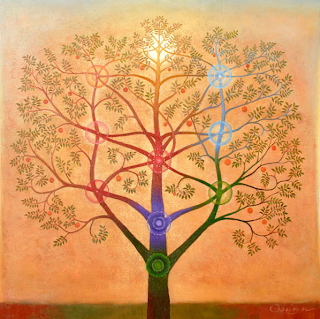C O N I F E R S are by definition cone bearers. The seed-bearing "fruit" of pines, firs, cypress and yew (according to some) is the inspiration for some of the first molded glass ornaments made in Germany. Pinecones were believed to be symbols of motherhood and fertility, so were given to brides and grooms to hang on their first holiday tree together. As for my increasingly fertile ornament collection, if I were organized enough to have it catalogued, I'm sure the largest bulk of it is glass cones in as many shapes and sizes as you can imagine. Some are pictured (at right and below) and others are pictured on a tree in a previous post.
A S P I N E C O N E S are naturally beautiful by themselves and dry wonderfully, they are brought inside used as decor (or kindling) in many homes. Painted, glittered and coaxed into wreaths, garlands and even boutonnieres, they have endless decorative appeal. The Southern Longleaf Pine is the official tree of the state of Alabama where I was raised. There, in my earlier years, I've mowed over pinecones when cutting the grass or painfully stepped on them when running around barefoot in the summer. Even so, I've always had an affinity for their natural beauty. And attracted to glittery things early on, I remember a ribboned and glittered pinecone doorknob hanger (not unlike this one) my mother would hang on the inside knob of the front door every holiday season.
B O T A N I C A L L Y, conifers are non-flowering plants (gymnosperms). Pollinated by the wind, their seeds are not enclosed within a fruit or seed pod. It wasn't until later in the evolution of plants that flowering trees (angiosperms) evolved. Female cones open up to catch the pollen from male cones. The usually flat, papery seeds that develop fall out of the open cone when it matures and dries out. The cones can be soft and small, like juniper "berries" or as large as ten to twenty inches long such as those of the Sugar Pine.
 L A S T W E E K, Jon surprised me with a new book named Lives of the Trees. Diana Wells, the author has written An Uncommon History of 100 trees. You can listen to an NPR interview with the author here. The publisher (Algonquin Books of Chapel Hill) states:
L A S T W E E K, Jon surprised me with a new book named Lives of the Trees. Diana Wells, the author has written An Uncommon History of 100 trees. You can listen to an NPR interview with the author here. The publisher (Algonquin Books of Chapel Hill) states:
A S P I N E C O N E S are naturally beautiful by themselves and dry wonderfully, they are brought inside used as decor (or kindling) in many homes. Painted, glittered and coaxed into wreaths, garlands and even boutonnieres, they have endless decorative appeal. The Southern Longleaf Pine is the official tree of the state of Alabama where I was raised. There, in my earlier years, I've mowed over pinecones when cutting the grass or painfully stepped on them when running around barefoot in the summer. Even so, I've always had an affinity for their natural beauty. And attracted to glittery things early on, I remember a ribboned and glittered pinecone doorknob hanger (not unlike this one) my mother would hang on the inside knob of the front door every holiday season.
B O T A N I C A L L Y, conifers are non-flowering plants (gymnosperms). Pollinated by the wind, their seeds are not enclosed within a fruit or seed pod. It wasn't until later in the evolution of plants that flowering trees (angiosperms) evolved. Female cones open up to catch the pollen from male cones. The usually flat, papery seeds that develop fall out of the open cone when it matures and dries out. The cones can be soft and small, like juniper "berries" or as large as ten to twenty inches long such as those of the Sugar Pine.
 L A S T W E E K, Jon surprised me with a new book named Lives of the Trees. Diana Wells, the author has written An Uncommon History of 100 trees. You can listen to an NPR interview with the author here. The publisher (Algonquin Books of Chapel Hill) states:
L A S T W E E K, Jon surprised me with a new book named Lives of the Trees. Diana Wells, the author has written An Uncommon History of 100 trees. You can listen to an NPR interview with the author here. The publisher (Algonquin Books of Chapel Hill) states: "as she investigates the names and meanings of trees, telling their legends and lore, she reminds us of just how innately bound we are to these protectors of our planet. Since the human race began, we have depended on them for food, shade, shelter and fuel, not to mention furniture, musical instruments, medicine, utensils and more.
Wells has a remarkable ability to dig up the curious and the captivating: At one time, a worm found in a hazelnut prognosticated ill fortune. Rowan trees were planted in churchyards to prevent the dead from rising from their graves. Greek arrows were soaked in deadly yew, and Shakespeare's witches in Macbeth used Gall of goat and slips of Yew to make their lethal brew. One bristlecone pine, at about 4,700 years old, is thought to be the oldest living plant on earth. All this and more can be found in the [book's] beautifully illustrated pages (themselves born of birch bark)."
E N D L E S S L Y fascinating and rich with lore and legend, it's hard to see running out of subject matter for The Decorated Tree (of Life)! The connection we all have to trees is as deeply-rooted in our collective psyche as the trees are to the ground on which we walk. The ritual of decorating them to celebrate almost any occasion is just as resonant, whether it be a Christmas tree; a bride's favor tree; or as I'm planning in time for February 14th, a Valentine cookie tree (look for it here).
CONE COMPOSITION | (Above, right): Easily the largest part of my ever-growing ornament collection is comprised of glass cones such as these. (From top to bottom), a silver and white cone from the Martha Stewart Collection (2009) for Macy's, an elongated bronze Republic of Czechoslovakia cone from Department 56, a chunky rounded bronze cone from the Martha Stewart Collection (2009) for Macy's, a green Czechoslovakian cone from Cost Plus World Market, and a Waterford Holiday Heirlooms cone. The cones are composed on a piece of tree bark Jon found while walking his dogs, which he saved for me to use as a photography prop.
BOOK OF TREES | (Above, left): Lives of the Trees by Diana Wells is quite an interesting and rich reference for 100 types of trees, from the Acacia to the Yew. It is published by Algonquin Books of Chapel Hill, a division of Workman Publishing. Three of the largest cones are Polish-made ornaments. The small green cone with a blown glass loop is from the Martha Stewart Collection (2007) for Macy's. Others are unidentified from my collection, both new and antique. All is contained in a live edge mango wood bowl from Target.
©2010 DARRYL MOLAND | ALL RIGHTS RESERVED
collecting, photography and styling by Darryl Moland












































